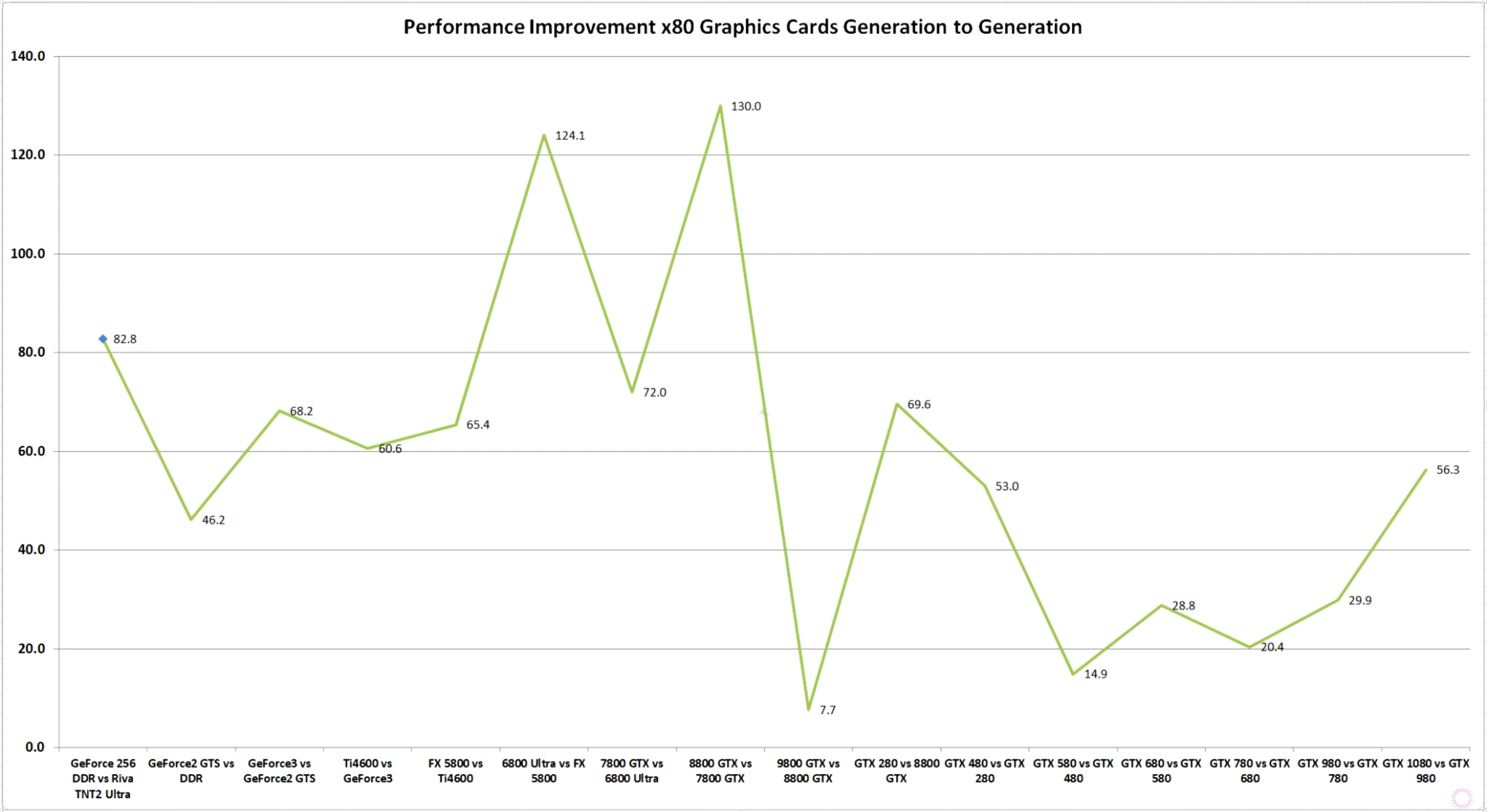YouTube’s ‘AdoredTV’ has shared two interesting videos, highlighting the history of NVIDIA’s GeForce graphics cards. In these videos, AdoredTV has shared a graph detailing the performance improvement for NVIDIA’s GPUs per generation. And as we can see, the performance improvement has been significantly reduced.
Prior to 2010, and with the exception of the NVIDIA GeForce 9800GTX, PC gamers could expect a new high-end graphics card to be faster by 70% than its predecessor (that’s average percentage). Not only that, but in some cases, PC gamers got graphics cards that were more than 100% faster than their previous generation offerings. Two such cards were the NVIDIA GeForce 6800Ultra and the NVIDIA GeForce 8800GTX.
However, and as we can see in the following graph, these days the performance gap has been severely reduced. New high-end GPUs no longer offer a performance increase over 50% (thankfully the GTX1080 was an exception to that), with the performance increase of these past few years averaging around 30%.
The reason behind this decrease is quite obvious. For starters, AMD cannot keep up with NVIDIA. Due to the lack of competition, NVIDIA does not feel the pressure to release a graphics card that will be way, way better than its previous generation offerings. Obviously, that wasn’t the case a decade ago when ATI was able to compete and surpass NVIDIA’s graphics cards.
Not only that, but NVIDIA has been releasing multiple versions of its high-end GPU. These days we are getting a cut-down version of the high-end GPU (GTX980 and GTX1080 are examples of that), a Titan version that is overpriced, and a proper high-end version (GTX980Ti and GTX1080Ti). As such, NVIDIA gradually increases performance per version, thus giving the impression that every new NVIDIA GPU that comes out is noticeable faster than its previous one.
We strongly suggest watching AdoredTV’s videos if you are interested in the history of NVIDIA’s GeForce GPUs!

John is the founder and Editor in Chief at DSOGaming. He is a PC gaming fan and highly supports the modding and indie communities. Before creating DSOGaming, John worked on numerous gaming websites. While he is a die-hard PC gamer, his gaming roots can be found on consoles. John loved – and still does – the 16-bit consoles, and considers SNES to be one of the best consoles. Still, the PC platform won him over consoles. That was mainly due to 3DFX and its iconic dedicated 3D accelerator graphics card, Voodoo 2. John has also written a higher degree thesis on the “The Evolution of PC graphics cards.”
Contact: Email


